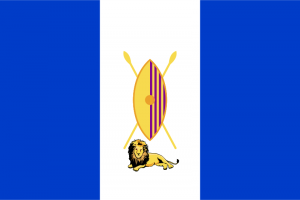Home › Forums › Ababaka Discussions for Unity and Peace › Ebyeddiini / Religion › The shroud Of Turin/Olugoye Yesu Mweyazikibwa
- This topic has 4 voices and 4 replies.
-
AuthorPosts
-
January 17, 2009 at 2:54 am #16954
Shroud of Turin
Wikipedia.The first photo of the Shroud of Turin, taken in 1898. It had the surprising feature that the image on the negative was clearer than the positive image.[1]The Shroud of Turin (or Turin Shroud) is a linen cloth bearing the image of a man who appears to have been physically traumatized in a manner consistent with crucifixion. It is kept in the royal chapel of the Cathedral of Saint John the Baptist in Turin, Italy. It is believed by many to be the cloth placed on Jesus of Nazareth at the time of his burial.
The image on the shroud is much clearer in black-and-white negative than in its natural sepia color. The striking negative image was first observed on the evening of May 28, 1898 on the reverse photographic plate of amateur photographer Secondo Pia who was allowed to photograph it while it was being exhibited in the Turin Cathedral. According to Pia, he almost dropped and broke the photographic plate from the shock of seeing an image of a person on it.
The shroud is the subject of intense debate among some scientists, people of faith, historians, and writers regarding where, when, and how the shroud and its images were created. From a religious standpoint, in 1958 Pope Pius XII approved of the image in association with the Roman Catholic devotion to the Holy Face of Jesus, celebrated every year on Shrove Tuesday. Some believe the shroud is the cloth that covered Jesus when he was placed in his tomb and that his image was recorded on its fibers at or near the time of his alleged resurrection. Skeptics, on the other hand, contend the shroud is a medieval forgery; others attribute the forming of the image to chemical reactions or other natural processes.
Various tests have been performed on the shroud, yet the debates about its origin continue. Radiocarbon dating in 1988 by three independent teams of scientists yielded results published in Nature indicating that the shroud was made during the Middle Ages, approximately 1300 years after Jesus lived. Claims of bias and error in the testing were raised almost immediately, and were answered by Harry E. Gove or others. Yet the dating controversy has continued. Follow-up analysis published in 2005, for example, claimed that the sample dated by the teams was taken from an area of the shroud that was not a part of the original cloth. The shroud was also damaged by a fire in the Late Middle Ages which could have added carbon material to the cloth, resulting in a higher radiocarbon content and a later calculated age. This analysis itself is questioned by skeptics such as Joe Nickell, who reason that the conclusions of the author, Raymond Rogers, result from “starting with the desired conclusion and working backward to the evidence”. Former Nature editor Philip Ball has said that the idea that Rogers steered his study to a preconceived conclusion is “unfair” and Rogers “has a history of respectable work”.
However, the 2008 research at the Oxford Radiocarbon Accelerator Unit may revise the 1260–1390 dating toward which it originally contributed, leading its director Christopher Ramsey to call the scientific community to probe anew the authenticity of the Shroud.”With the radiocarbon measurements and with all of the other evidence which we have about the Shroud, there does seem to be a conflict in the interpretation of the different evidence” Gordan said to BBC News in 2008, after the new research emerged.Ramsey had stressed that he would be surprised if the 1988 tests were shown to be far off, let alone “a thousand years wrong”, and insisted that he would be keeping an open mind.
January 17, 2009 at 3:42 am #21790The Shroud of Turin, lyelinnya eriyitibwa olugoye olugambibwa nti lwelwazikibwamu Yesu. Yesu bweyajjibwa ku musalaba nga ebyawandiikibwa bwebigamba, Yusufu owe Arimathea, omwami ono omugagga yeyakola emikolo egyokumuziika. Era yakozesa olugoye luno olwebbeyi, olwaterekebwa obulungi nelusobola okubeerawo emyaaka gino gyonna.
http://www.youtube.com/watch?v=_8KLjxFCpXw
Ebipya ebikwaata ku lugoye luno.
http://www.youtube.com/watch?v=jekxRvP-688
Bano balaga obujulizi bwaabwe nti olugoye luno, kya mazima lulina emyaaka 2000.
January 17, 2009 at 12:12 pm #21793Mulongo, I like your research skills. Thank you for this piece. You are great.
January 17, 2009 at 4:32 pm #21802Nange nadiyagadde nyo okulaba ku lugoye luno. Mu Baibuli omukazi yakwata ku kilenge kya Yesu nawona endwade, lulabika lugoye lwa magero.
January 21, 2009 at 1:09 am #21855Nange wano wabbali ku you tube nzudde wo kano. Mu kifaananyi ekiri ku lugooye lwe Turin mwebajja ekifaananyi ekiri mu video eno. Olugoye luno lutulaga ebyafaayo, lutulaga nga Yesu bweyali afaanana mu maaso. Ekifaananyi si kya njawulo nnyo ku byetulaba mu masinzizo bulijjo.
Touch the face of Jesus.
-
AuthorPosts
- You must be logged in to reply to this topic.




